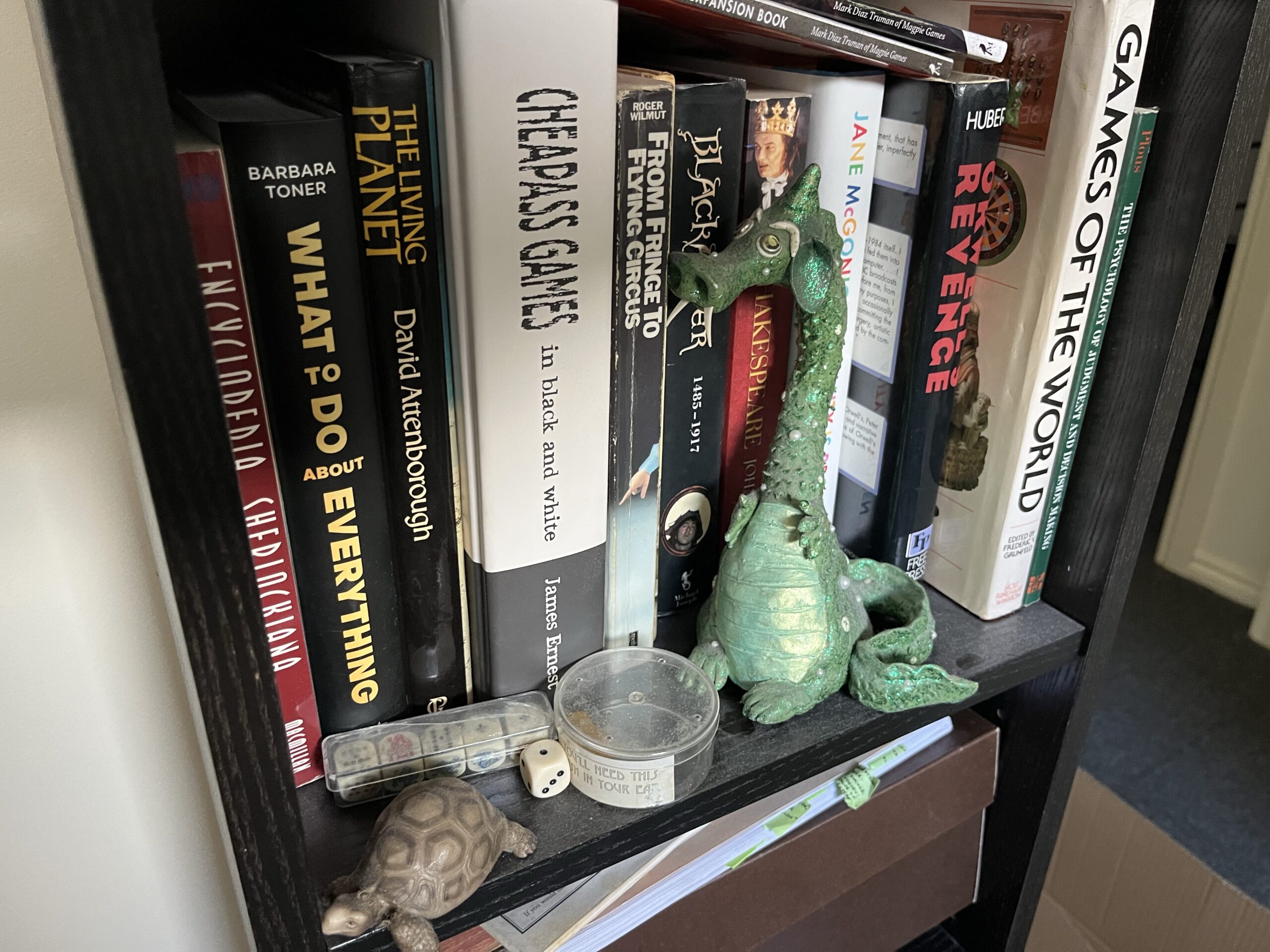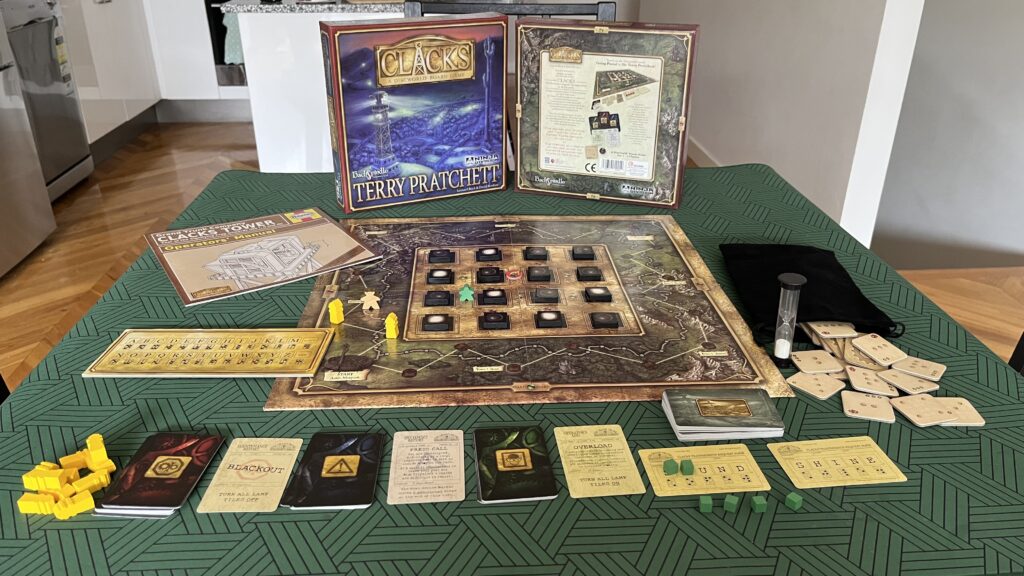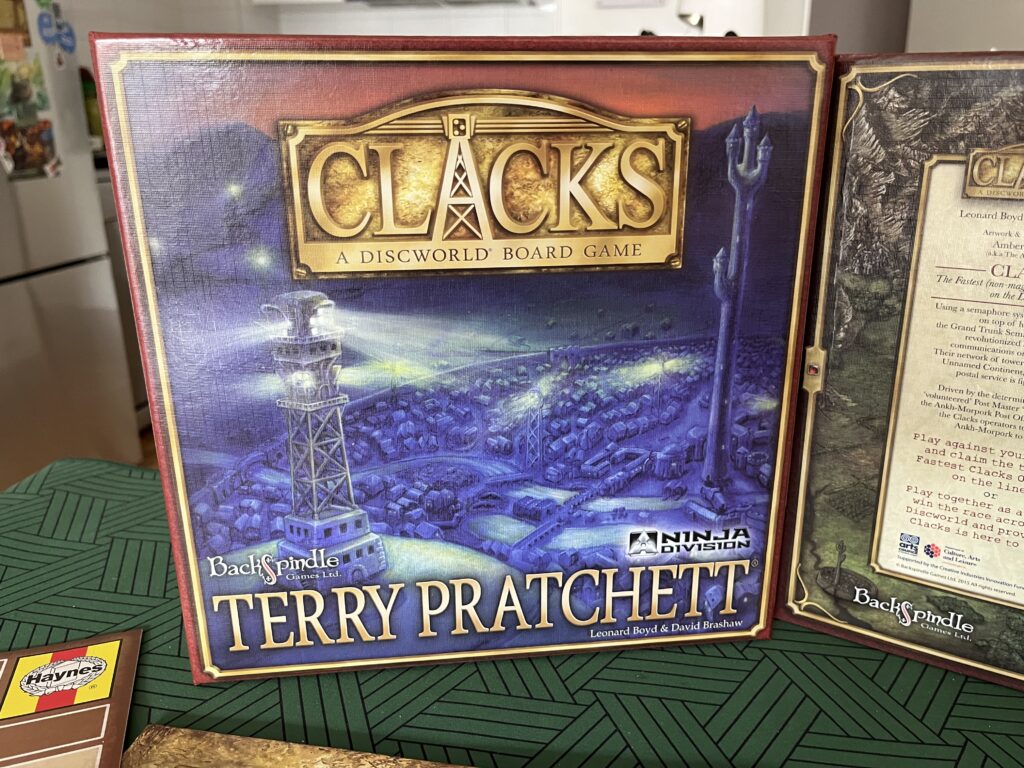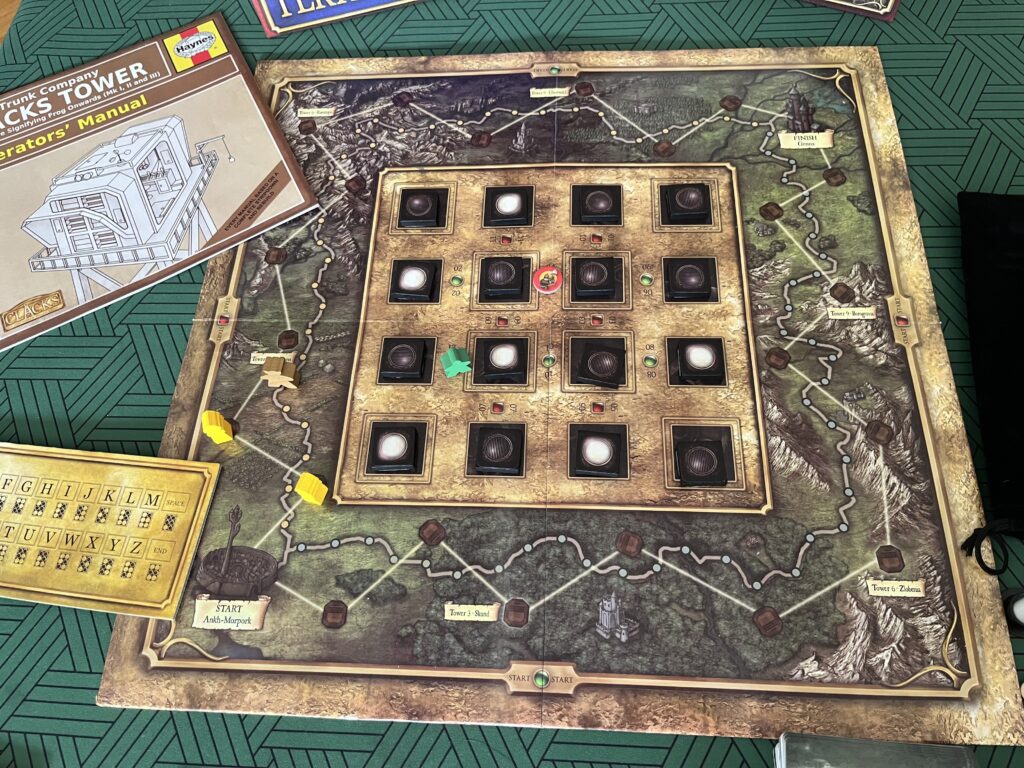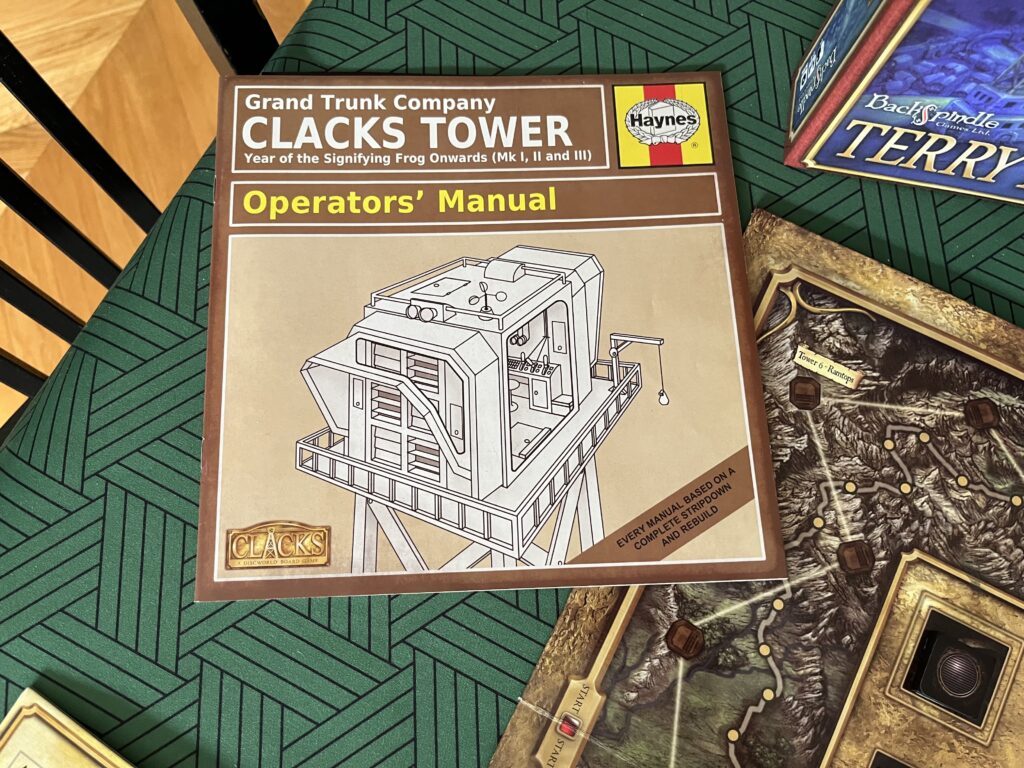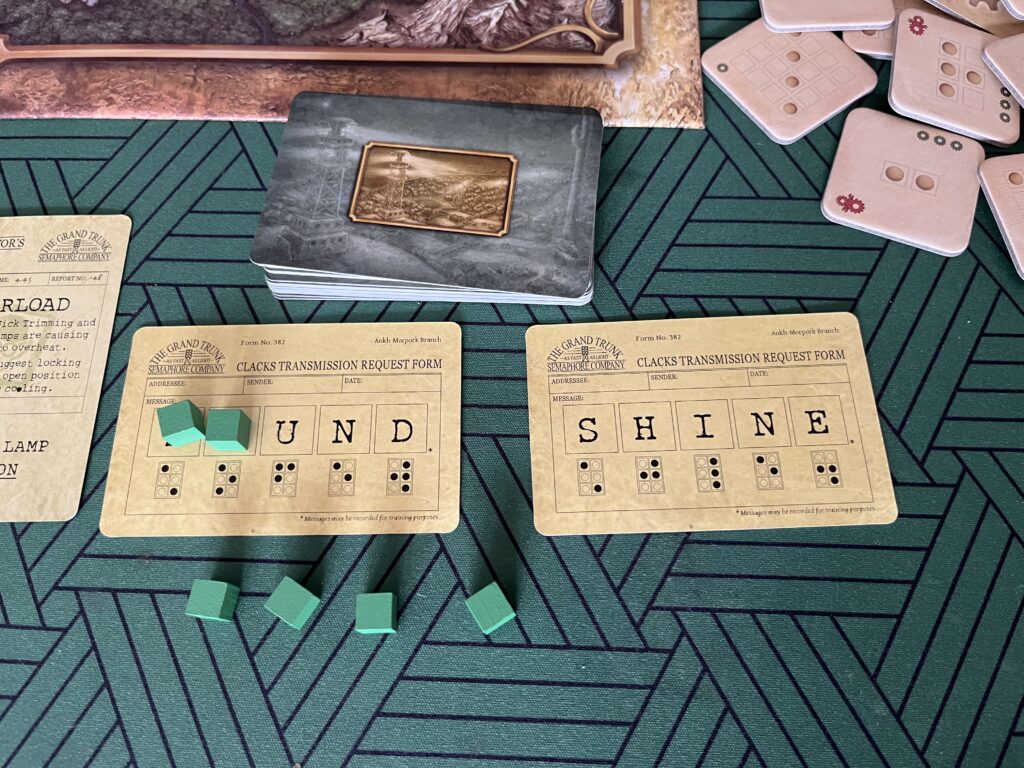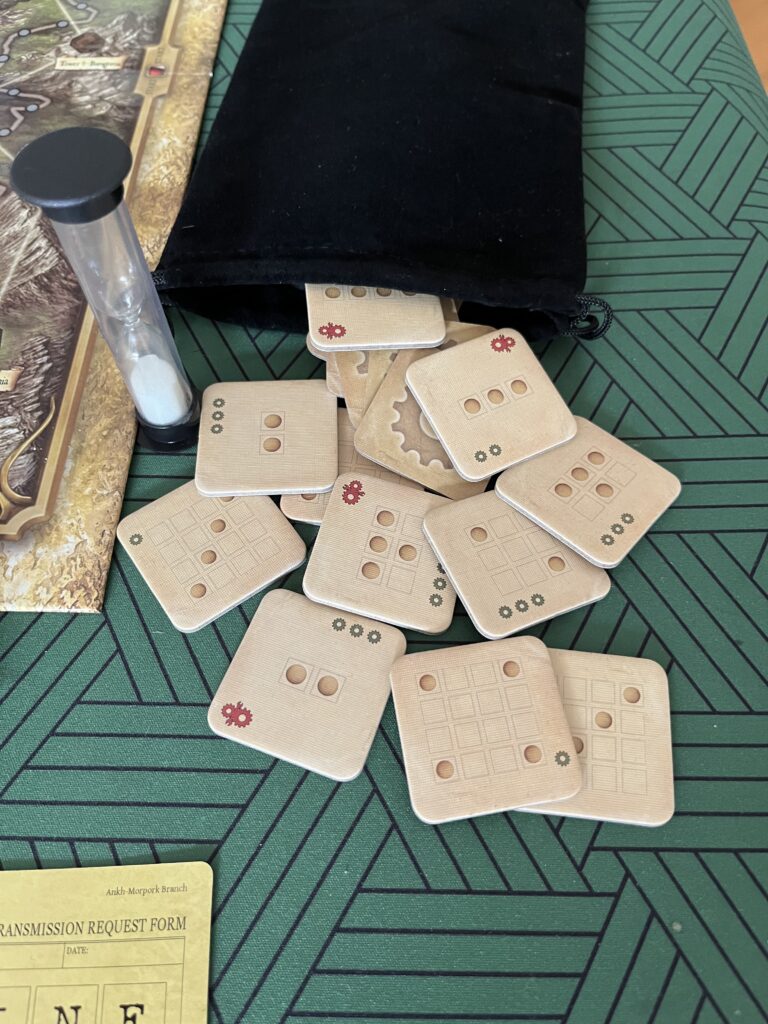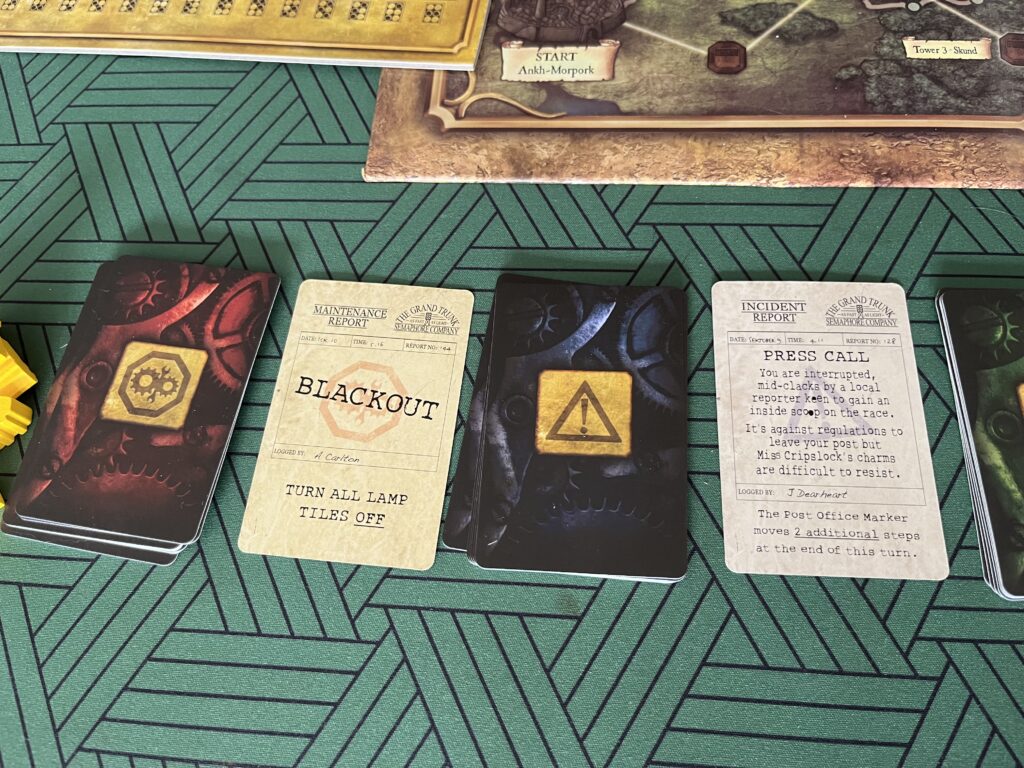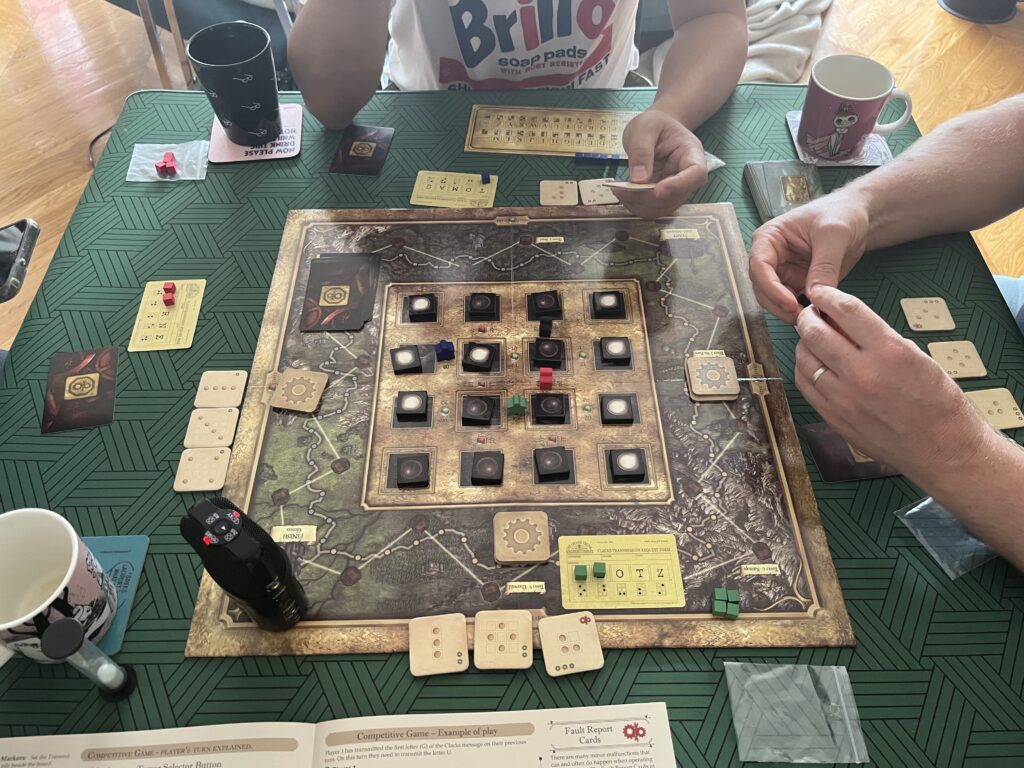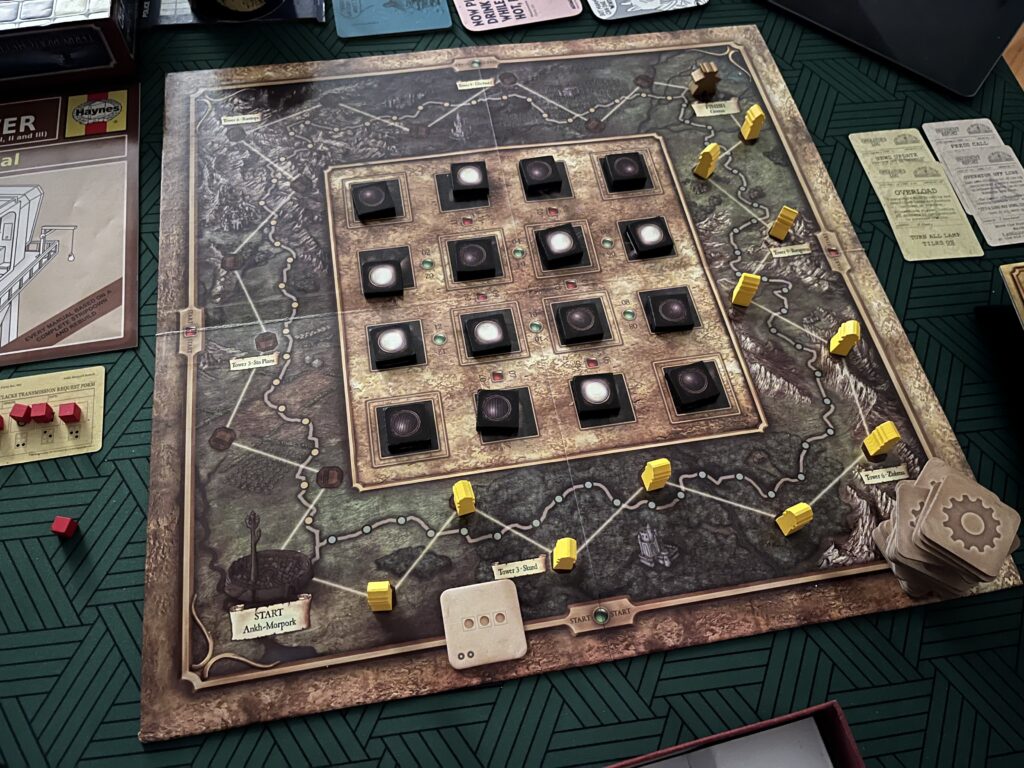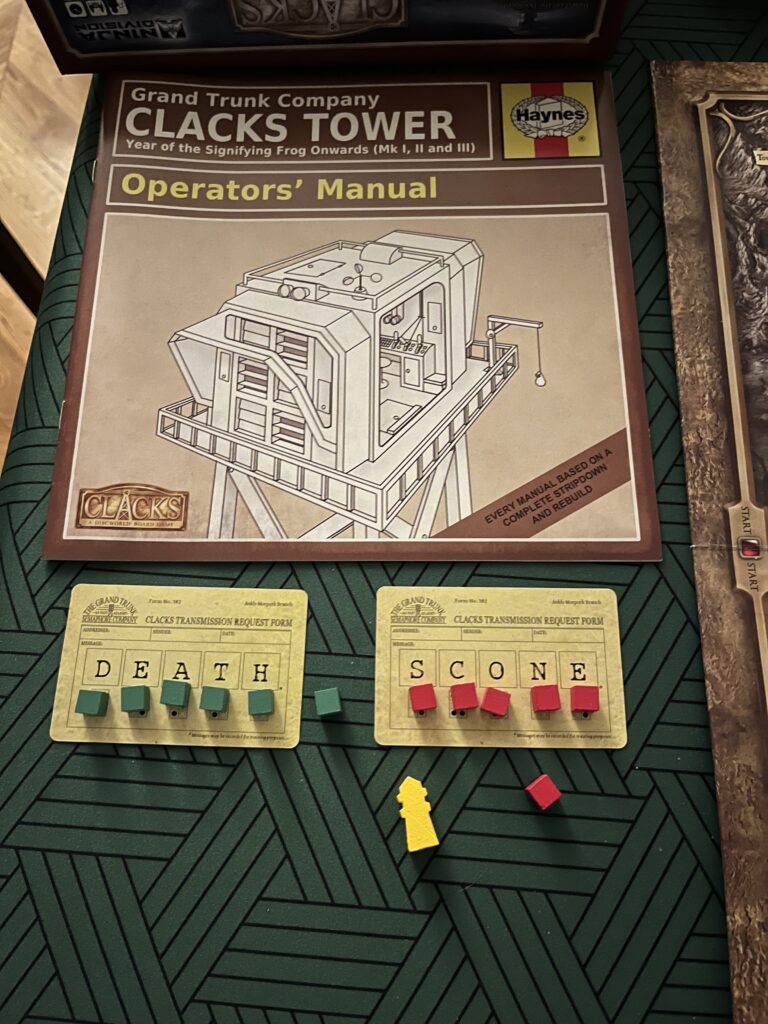#Pratchat85 Notes and Errata
These are the episode notes and errata for Pratchat episode 85, “AT LAST, SIR TERRY”, discussing Terry Pratchett’s 2010 Richard Dimbleby Lecture, “Shaking Hands with Death”, with guest Myfanwy Coghill.
Iconographic Evidence
Notes and Errata
- The episode title is taken from the first line of the tweets sent out by Rob Wilkins and Rhianna Pratchett to publicly announce Pratchett’s death, which is still (as of March 2025) available:
- Myf last appeared as a guest for #Pratchat23, “The Music of the Nitt”, discussing Maskerade, in September 2019.
- Avocation comes from the same Latin root as vocation, but rather than meaning “called to”, it means “called away”. It is used these days to refer to something which is not someone’s main occupation, but their true passion outside of work.
- Mortuary work refers to work done on the body of a deceased person, including embalming and other forms of preservation or restoration to make the body suitable for viewing.
- The 10th anniversary of Terry Pratchett’s death will be on the 12th of March, 2025. In the first published version of this episode, Ben incorrectly gives the date of his death as the 15th of March in a footnote; it turns out there’s a mistake in the proof copy of the official biography, A Life With Footnotes*, which he used to double check! (It might be a deliberate mistake, to help detect piracy – in the vein of trap-streets in street directories.) A corrected episode should be out by the time you read this, but apologies if you got the incorrect version.
- Pratchett’s documentary about assisted dying was Terry Pratchett: Choosing to Die, produced in 2011 for BBC Scotland. It was broadcast in the UK on the 13 June 2011, and had its American premiere at the 2011 North American Discworld Convention in Madison, Wisconsin (yes, that Madison). The film won several television awards, including a Scottish BAFTA, a Royal Television Society award, and an Emmy for Best Documentary.
- We’ve so far been unable to determine if “Shaking Hands with Death” or any of Pratchett’s documentaries were broadcast in Australia, though we have heard anecdotally that a couple of the BBC ones were. If you know, please let us know!
- “Space Pilot 3000”, the first episode of Futurama which features a suicide booth, was first broadcast on 28 March, 1999 on Fox. The show follows Fry, a pizza delivery boy who is accidentally frozen in suspended animation for a thousand years on New Year’s Eve, 1999, and wakes in the year 3000, heavily inspired by retro-futuristic cartoons. Matt Groening says the inspiration for the suicide booth was a Donald Duck cartoon from 1937, Modern Inventions, in which Donald is nearly killed by a variety of devices in a “Museum of the Future”. They appear in a further ten Futurama episodes (and telemovies), an in-universe appear to have been around for a very long time – since at least 2008! In fiction, there are examples of similar devices dating back to the 1890s, including the 1895 short story “The Repairer of Reputations” by Robert W. Chambers. In his speech, Pratchett refers to Martin Amis’ facetious mention of suicide booths in a 2010 interview with The Times (no longer available online), in which an elderly user would also be given “a martini and a medal”. Neither side of the euthenasia were particularly pleased, but as Prachett points out, it did get people talking.
- “That dog episode” of Futurama is “Jurassic Bark”, from the show’s fifth season, first broadcast on 17 November, 2002. In the episode, protagonist Fry finds that archaeologists have discovered the pizza parlour where he used to work as a delivery boy one thousand years earlier – including the remains of Fry’s now fossilised dog. Along with other artefacts is a fossilised dog – Fry’s own dog, Seymour, who Fry decides to clone, Jurassic Park style. It’s generally regarded as one of the best episodes of the show, and was nominated for an Emmy.
- David Harewood OBE gave the 2023 Richard Dimbleby Lecture at the Battersea Arts Centre. It was titled “75th anniversary of the Empire Windrush arriving in this country”. The HMT Empire Windrush was originally the MV Monte Rosa, a German passenger ship seized by the British after World War II. In 1948, the Empire Windrush brought more than one thousand passengers, most of them West Indian, to England, a voyage that became a famous symbol of post-war migration to the United Kingdom. This group of migrants are sometimes referred to as the “Windrush generation”, and among them were members of Harewood’s own family.
- The Reith Lectures are a similar lecture series broadcast annually on BBC Radio, and which are also available as a podcast; you can find an archive of the lectures at the BBC. The lecture Myf mentions was given by forensic psychotherapist Gwen Adshead in 2024, and is titled “Four Questions About Violence”.
- Rob Wilkins was indeed a “Stunt Pratchett” during a talk at the Sydney Opera House, but that was on 17 April, 2011 – more than a year after the Richard Dimbleby Lecture. So its understandable he may have been nervous about doing it for the first time for national television! We’ve previously mentioned this event in #Pratchat51, “Boffoing the Winter Slayer”, as the event was chaired by that episode’s guest, Garth Nix! You can still find it as a 2013 episode of the Ideas at the House podcast, currently available on Acast: “Terry Pratchett in Conversation with Garth Nix”.
- Tony Robinson produced the documentary Tony Robinson: Me and My Mum in 2006, as part of Channel 4’s series The Trouble with Old People. It covered his difficulties in finding a care home for his mother, who also suffered from Alzheimer’s Disease, and includes her life and death in the home. Robinson is still an ambassador for the Alzheimer’s Society; last year he featured the Society’s Director of Research and Innovation, Fiona Carragher, on an episode of his podcast Cunningcast. The episode is titled “DEMENTIA Action Week: A Defining Year”, and was released on 16 May 2024.
- The BBC Big Read was a survey conducted in 2003, with more than 750,000 responses. Pratchett’s entries in the final list of one hundred were, in order: Mort (#65); Good Omens (#68); Guards! Guards! (#69); Night Watch (#73); and The Colour of Magic (#93).
- The line “I never saved anything for the swim back” is from the science fiction film Gattaca (1997, dir. Andrew Niccol), starring Ethan Hawke and Uma Thurman. We won’t say too much, since the line comes fairly close to the end, but it still holds up and is worth a watch.
- Death’s scene with the swan is in Maskerade, as is the scene where Granny Weatherwax plays cards with Death for the life of a newborn baby. After Death lets her win, she notices he has a shoulder injury and pops his arm back into place for him. As he’s leaving, Death asks her what she would have done if she’d lost. Granny replies with a smile: ‘Well, for a start … I’d have broken your bloody arm.’
- The Pitt is a 2025 American medical drama on HBO’s Max streaming service. It’s set in the emergency department of a fictional hospital in Pittsburgh. The show’s first season covers one 15-hour shift in the ED, which is nicknamed “The Pitt”. It stars Noah Wyle (best known for playing another doctor in ER) as a senior attending physician, alongside a cast of younger doctors, including students, interns and residents.
- Carl Jung (1875-1961) was a Swiss psychiatrist and philosopher probably best known for his idea of the “collective unconscious” – that humans have in common a set of instincts (basic desires) and archetypes (universal symbols). Despite much criticism and evolution of thought in psychology, Jung’s theories remain very popular.
- Rumpelstiltskin is the German version of a folk tale collected by the Brothers Grimm in 1812. Similar stories appear in many cultures; it’s known in the Aarne–Thompson–Uther Index as type ATU 500, “The Name of the Supernatural Helper”. The titular character, usually described as an imp, is not summoned by anything in particular except desperation on the part of the heroine, who has been given the impossible task of spinning straw into gold, as her father boasted she could. If she does not, she will be killed. Rumpelstiltskin completes the task but in return asks for her first born child. Some years later, the women has married the prince and become Queen, and the imp returns for his payment when the child is born. When she protests, he gives her a chance: he will give up the child if she can guess his name, but she has only three days to work it out. His own pride is eventually his undoing, since the King eventually discovers his name by coming across his house in the woods, and secretly watching him as he dances and sings a song to himself about how she will never guess his name is Rumpelstiltskin. Therea re many variations, including some from Nordic countries, and the British Isles, some explicitly making the Rumpelstiltskin character a demon of some kind.
- The Reddit carbon monoxide leak story is from 2015, posted on r/legaladvice as “[MA] Post-it notes left in apartment.” In 2018 the story was made into an episode of the podcast The Endless Thread, “Something Wicked”.
- Dignity in Dying is a UK not-for-profit, membership supported campaigning organisation originally formed in 1935 as the Voluntary Euthanasia Legalisation Society. They also have a sister organisation, Compassion in Dying, formed in 2008. Compassion in Dying do not campaign for changes in the law, but are a registered charity that helps individuals to talk about and make decisions related to their own deaths, including legal and administrative assistance for things like living wills, Do Not Resusciatate orders and giving power of attorney to trusted loved ones.
- Thomas Tallis (1505 – 1585) was a 16th-century English composer primarily of choral music. In 1575, Queen Elizabeth gave Tallis and his later contemporary William Byrd an exclusive letters patent for printing music and music paper in England, which made sure his music was perfomed across the British Isles and preserved into the modern day. Most of his works are religious, and the best known include Lamentations of Jeremiah, Miserere nostri, and Spem in alium.
- Unity LeJean is an Auditor in Thief of Time who so well creates a human body that she develops human thoughts and sensibilities. We discussed Unity’s life and death in #Pratchat48, “Lu-Tze in the Sky with Lobsang”.
- While we have not been able to find any documented cases of people being coerced into assisting dying, it is notable that reasons like “perceived burden on family, friends or caregivers”, “isolation or loneliness” and financial issues are often cited as reasons by those accessing assisted dying in Canada and Oregon. Meanwhile in the UK, according to the Crown Prosecution Service, 187 assisted suicide cases were referred to them by police between April 2009 and March 2024. Only 24 of those proceded without being withdrawn, mostly because they failed the test of being in the public interest. Of those, eight became cases of other crimes, including homicide; one resulted in acquittal; four were successfully prosecuted; and six are still ongoing. They don’t say what happened to the other five, but we infer that most of those with were withdrawn by police or with which the CPS didn’t proceed failed a public interest test, which maybe suggests they are the sort of thing that would be legalised under assisted dying laws.
- “The Appointment in Samarra” is an ancient Mesopotamian tale which dates back to the Babylonian Talmud. The best-known modern version derives from Sheppey, the last play written by English writer W. Somerset Maugham, in 1933. Towards the end of the play, the title character – an Irishman who has won the lottery, but decides to spent the winnings on charity – is visited by Death. When he muses that he should have bought a new home on the Isle of Sheppey, as he considered earlier in the play, death gives a brief monologue recounting the story of the Appointment in Samarra. It is definitely worth a google, though you may find the top result is the 1934 novel Appointment in Samarra by American writer John O’Hara, who included Somerset Maugham’s version in his book after he was shown it Dorothy Parker and was inspired to change the title of the novel.
- The Google search engine was launched in 1998, the first search engine to use back-link data to algorithmically rank pages by importance in search results. Exactly when it became the most popular search engine is hard to guage, but the phrase “to google” meaning “to search on the Internet” had entered popular usage by 2002, so Google was certainly firmly entrenched by 2010.
- Assisted dying laws in Australia are state legislation, like most other medical law. Ben isn’t quite correct; every state has an active assisted dying law, but the two Australian territories do not (yet). The laws have many similar restrictions, and are seen as quite strict compared to legislation in other countries: patients must be legal adults, have a terminal illness with a life expectany of twelve months or less, and be in severe pain. There are also administrative barriers in terms of how and when a patient can make the request. The laws differ in many other ways, including who is allowed to give life-ending medication, how doctors must behave if they object to such a treatment, and who is allowed to suggest voluntary assisted dying (complicated further by federal laws prohibiting the discussion of suicide over carriage services, which includes telehealth). As of March 2025, the situation in each state is:
- The Northern Territory previously had the Rights of the Terminally Ill Act 1995, making it the first jurisdiction in Australia to legalise assisted dying. The conservative federal government of the time disagreed with the law, and introduced the Euthanasia Laws Act 1997, which made it illegal for territories to pass laws permitting assisted dying. This was repealed by the the Restoring Territory Rights Act 2022. A panel reported findings on possible new legislation for the Northern Territory in 2024, but no new law has yet been proposed.
- Victoria was the first state to pass assisted dying legislation, with the Voluntary Assisted Dying Act 2017. It came into effect on 19 June 2019. Amendments to the bill to get it passed also increased funding for palliative care in regional areas. It served as a model for legislation in most of the other states.
- Western Australia has the Voluntary Assisted Dying Act 2019, which came into effect on 1 July 2021.
- Tasmania has the End-of-Life Choices (Voluntary Assisted Dying) Act 2021, which came into effect on 23 October 2022.
- Queensland has the Voluntary Assisted Dying Act 2021, active since 1 January 2023.
- South Australia has the Voluntary Assisted Dying Act 2021, active since 31 January 2023.
- New South Wales has the Voluntary Assisted Dying Act 2022, which came into effect on 28 November 2023.
- The Australian Capital Territory passed the Voluntary Assisted Dying Act 2024 on 5 June 2024, which comes into effect on 3 November 2025.
- When Ben mentions that the government has introduced and then taken away support for those with disabilities, he’s referring to changes to the National Disability Insurance Scheme (NDIS), first introduced by the Gillard government near the end of their time in office, in 2013. This is a government scheme that supports those under the age of 65 with permanent disabilities, including medical costs, equipment and services. Successive conservative governments did not do the scheme any favours, capping the number of staff at its Agency well below projected need, and making changes to its leadership. In 2024 major reforms were passed in legislation by the Albanese Labor government, but while these were supposedly based on recommendations from an independent review of the scheme, they were criticised for effectively removing support from many disabled Australians, who are already underserved by the scheme.
- The Victorian death pyramid – more properly known as the “Metropolitan Sepulchre” – was a pyramid-shaped necropolis proposed by the architect Thomas Willson in 1829. It was meant to address the shortage of burial space in London, and would have been built in Primrose Hill. The design was “nearly four times the height of St Paul’s” (about 90 stories), with external stairs and an obervatory at the top; it has a potential capacity of five million corpses. Even at the time, it was considered “extraordinary” and “absurd”. Surprisingly, and to Ben’s disappointment, 99% Invisible don’t appear to have done an episode (or even a mini-story) about this.
- The infant mortality rate in Victorian London was very high, especially compared to the overall death rate, which had otherwise declined. Some sources place the infant mortality rate at over 300 in 1,000 births in 1800. One pamphlet from 1862 noted that in 1859, two in every five deaths was of an infant aged five or under, and half of those – one in five deaths – was of babies under a year in age. These observations led to activism around child health and safety, and reforms and initiatives including bottle feeding of babies.
- Liz has previously mentioned the Melbourne General Cemetery in #Pratchat57West5, “Daniel Superbaboon” and #Pratchat34, “Only You Can Save Deadkind”; the latter episode is no longer available.
Thanks for reading our notes! If we missed anything, or you have questions, please let us know.



